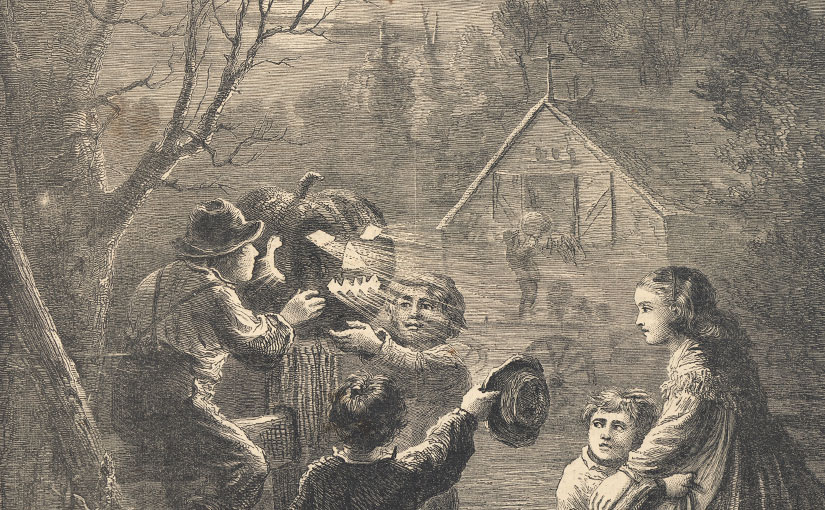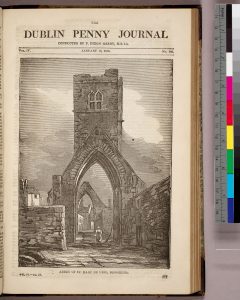by Sara Weber, Special Collections Digital Project Specialist
As with many other aspects of our modern Halloween celebrations, we owe the ubiquitous jack-o’-lantern to the Irish immigrants who brought their traditions with them to the United States.
In the January 16, 1836, issue of The Dublin Penny Journal we find the tale of “Jack o’ the Lantern.” Here the author relates how he learned from his uncle (a “kind, generous soul … deeply imbued with superstition”) the legend explaining the lights they see from the edge of an Irish shaking bog. Our more scientifically minded narrator insists the lights are merely ignis fatuus, a “gaseous vapour arising from putrid vegetable bodies,” but his uncle attributes them to “that misguided traveler, Jack o’ the Lantern.”
Read on to learn just who Jack is and how he came to haunt the bogs of Ireland.
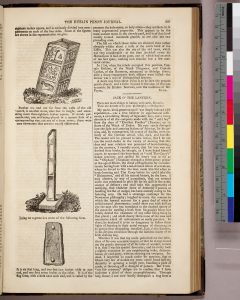
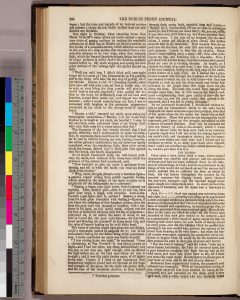
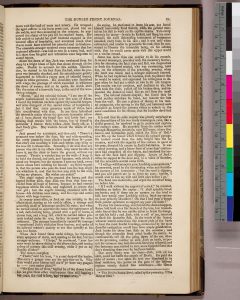
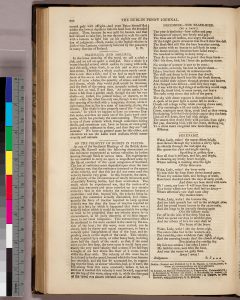
Other versions of the story end with the Devil giving Stingy Jack a coal to light his way, after he is refused entry to both Heaven and Hell. Jack carries that coal not in a pumpkin but rather in a turnip. The Irish carved faces into a variety of fruits and vegetables with the intent of scaring off the restless souls thought to return to the living world on the eve of the Celtic festival of Samhain—traditionally November 1, though celebrations often began the evening before. When Irish immigrants arrived in the Americas, they discovered that pumpkins (a plant native to the Americas and thus more readily available) are rather easier to carve than turnips.
The post’s header image comes from the front page of the November 23, 1867, issue of Harper’s Weekly, which features both an illustrated story of “The Pumpkin Effigy” and a poem titled simply “The Pumpkin.” The illustration is one of the earliest in a major American serial to depict a carved pumpkin. The article relates a tale not of Halloween, however, but rather of a “quaint old custom” of “mischievous urchins” using a jack-o’-lantern to spook the unwary. The article credits the English with the origin of this pastime and laments its abandonment by the “rising generation”.
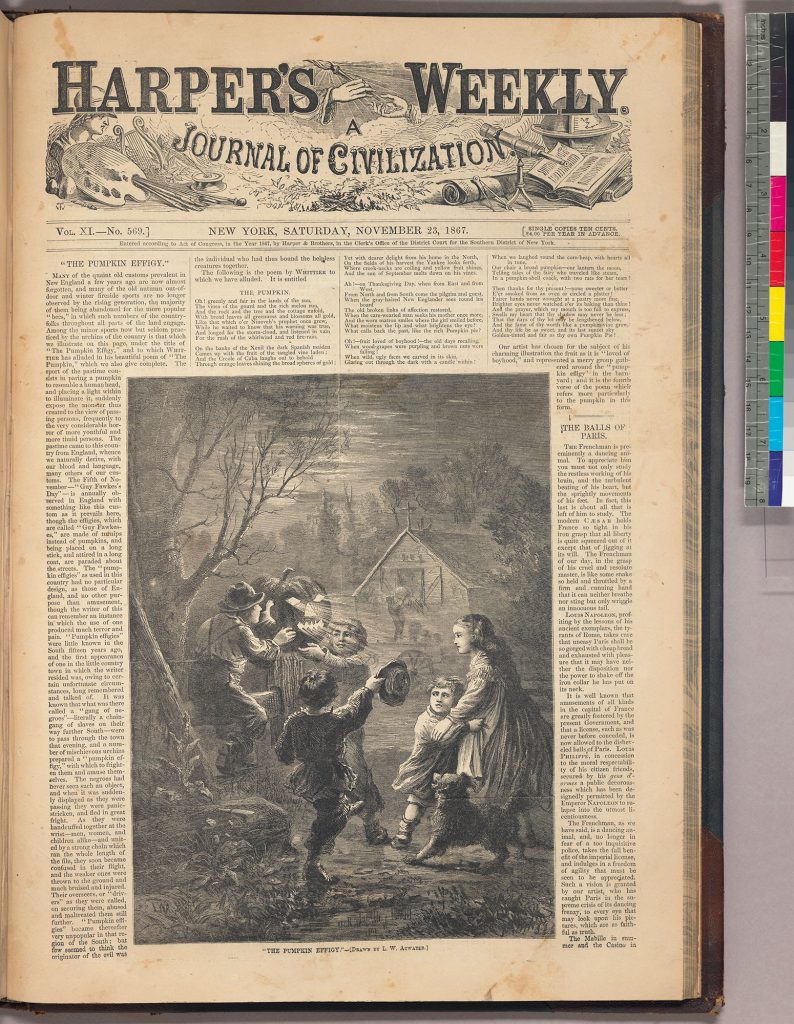
Happy Halloween to you and yours
from all of us in Notre Dame’s Special Collections!
Halloween 2023: Demon Horses and How to Tame Them
Halloween 2022: A Halloween Tale: “John Reardon and the Sister Ghosts”
Halloween 2021: A Welsh Witch in the Woods
Halloween 2020: Headless Horsemen in American and Irish Legend
Halloween 2019: A Halloween trip to Mexico
Halloween 2018: A story for Halloween: “Johnson and Emily; or, The Faithful Ghost“
Halloween 2017: A spooky story for Halloween: The Goblin Spider
Halloween 2016: Ghosts in the Stacks
